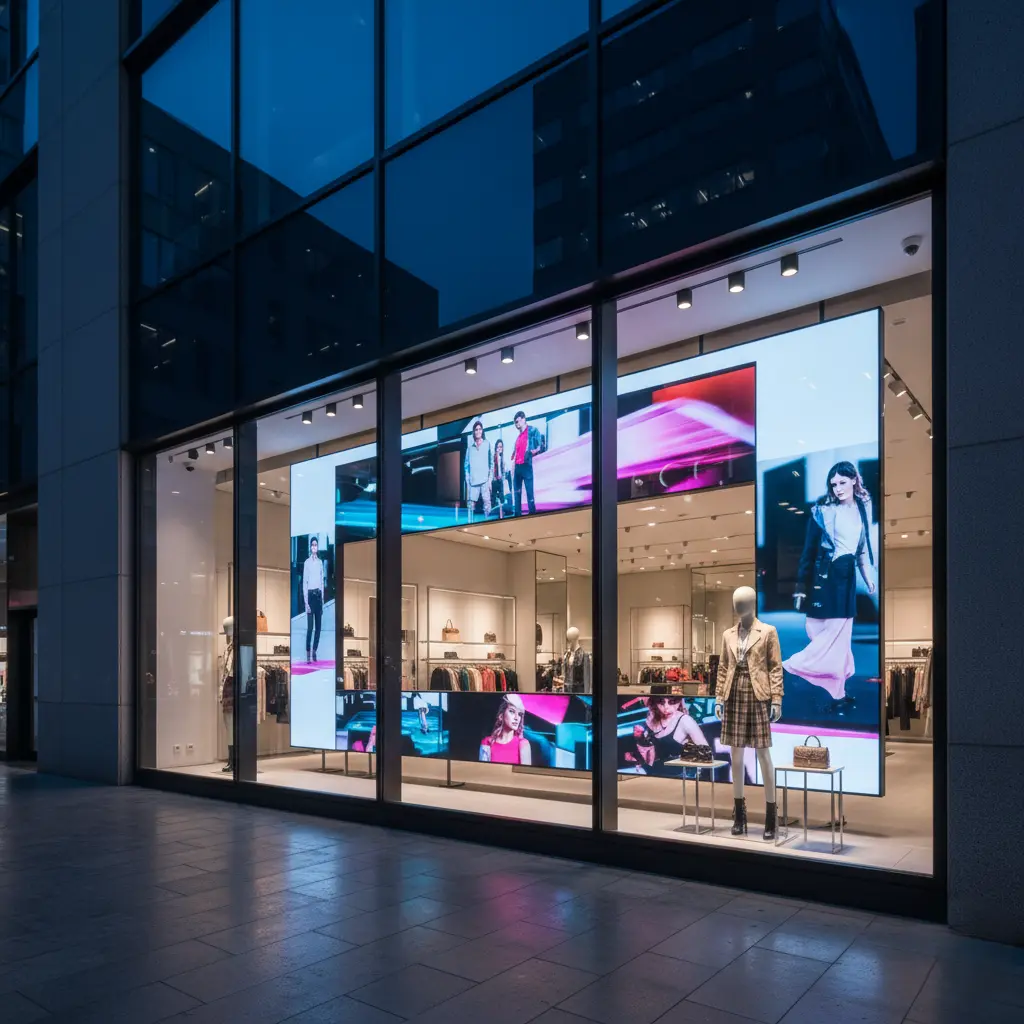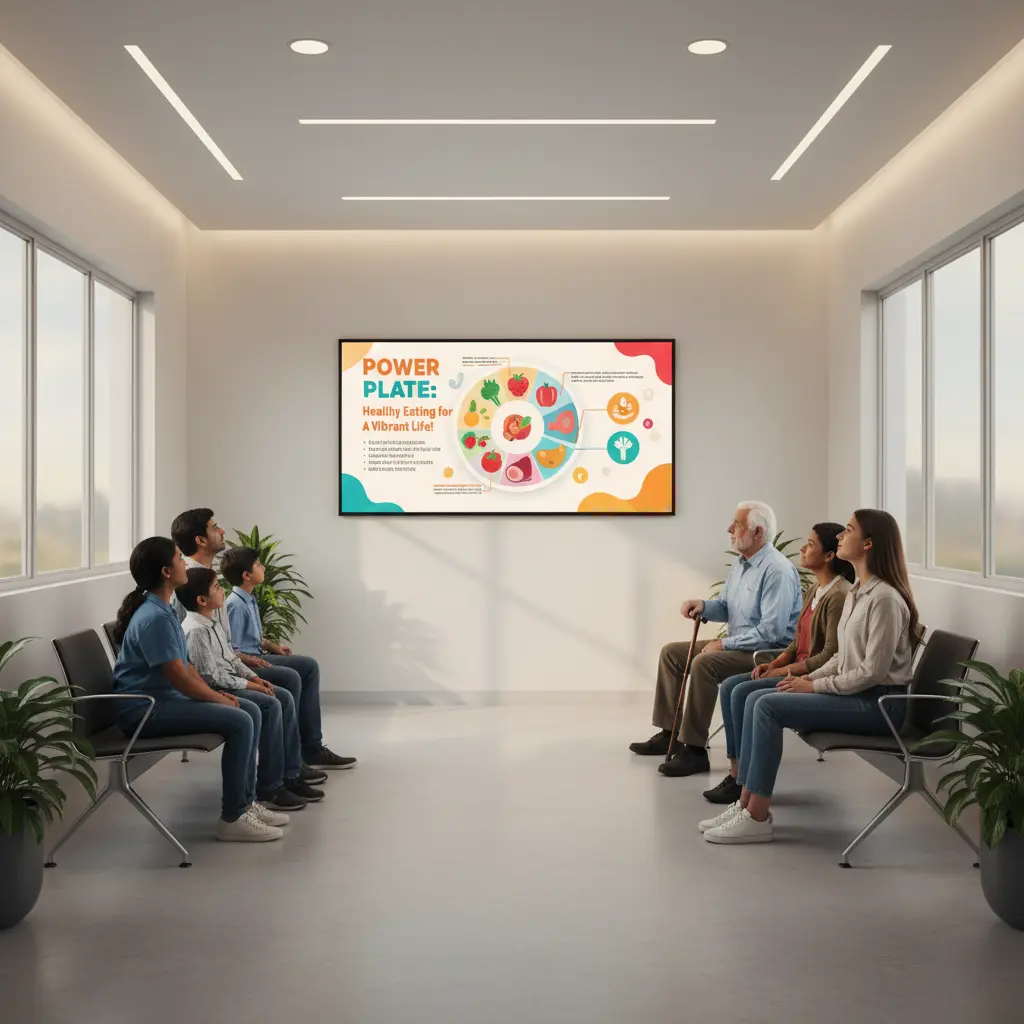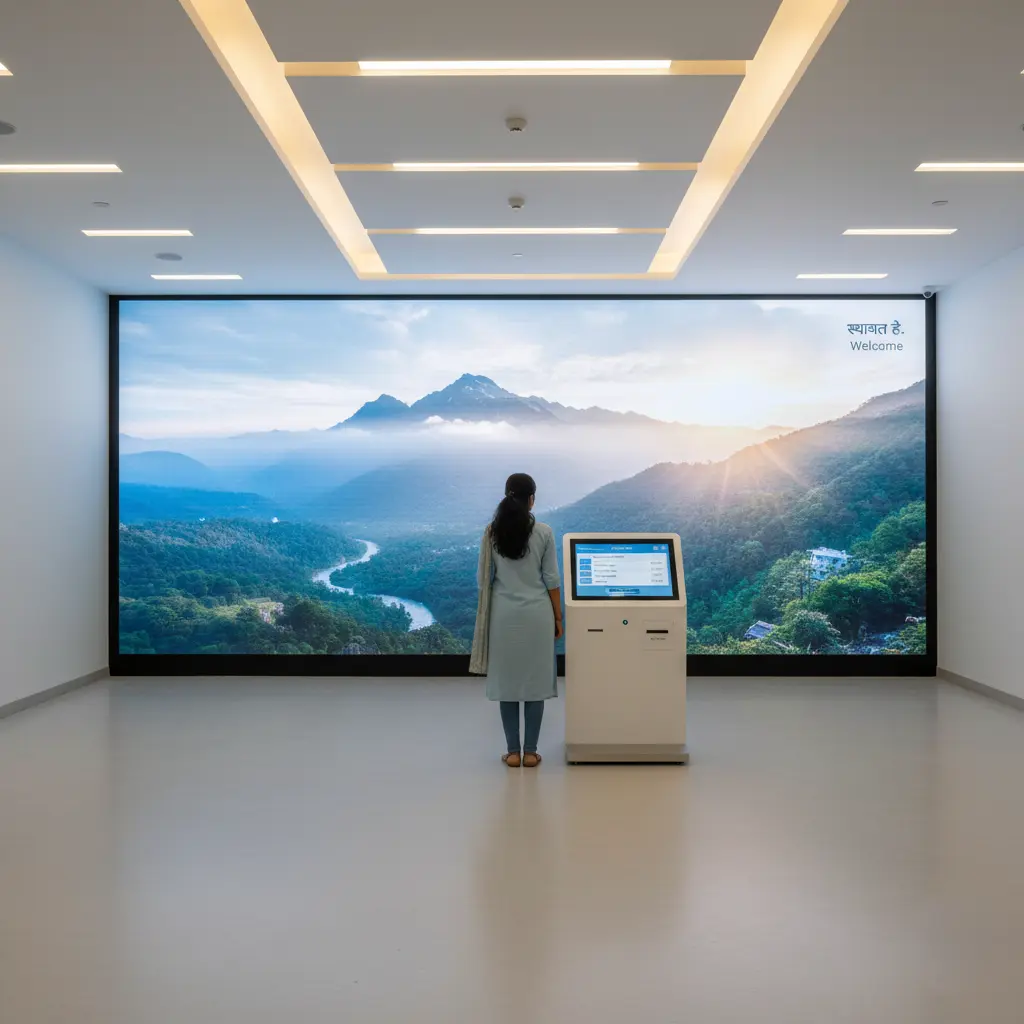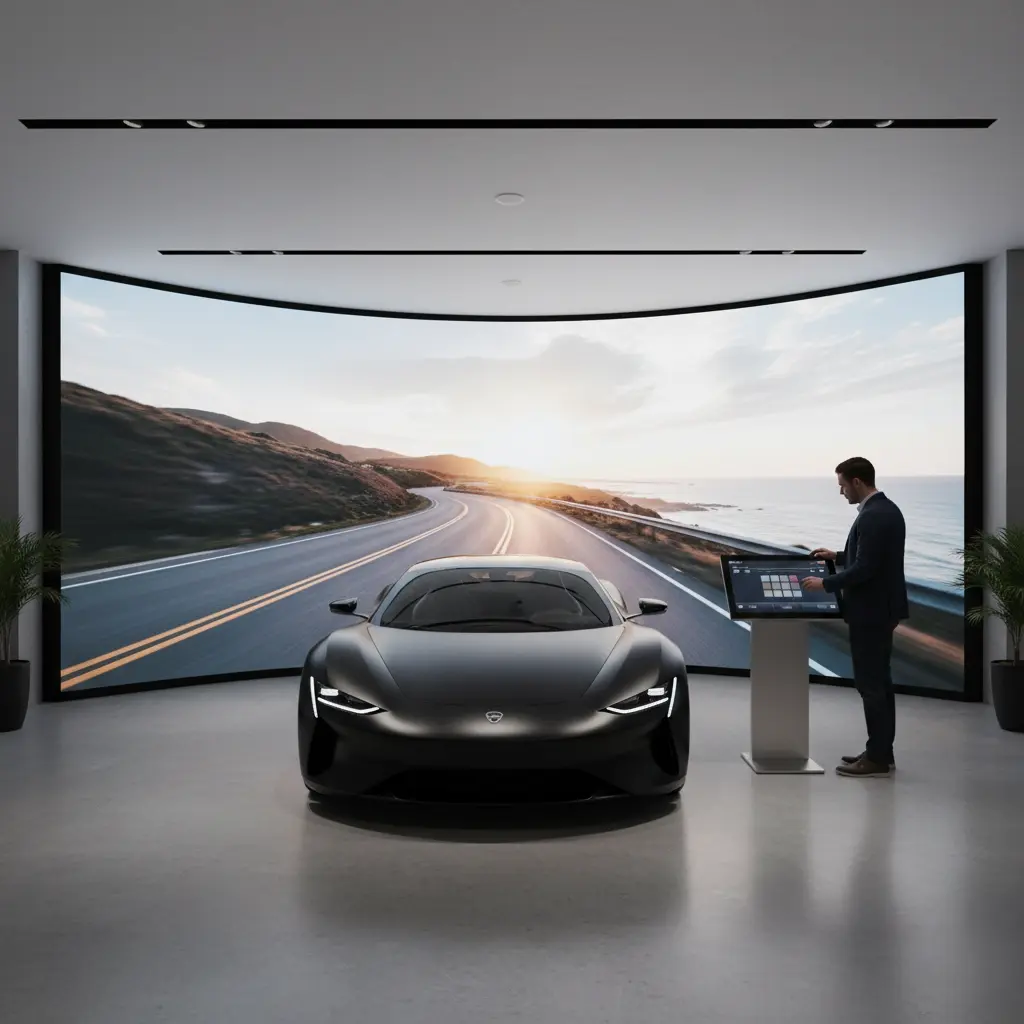The Evolution of the In-Store Experience
In a world dominated by e-commerce, brick-and-mortar retail must evolve to stay relevant. The era of static cardboard signs and printed posters is fading, giving way to a new frontier of in-store marketing—one built on dynamism, personalization, and immersive experiences. This transformation isn't just about aesthetics; it's a fundamental shift in how brands communicate with customers at the most critical point of their shopping journey. The future of retail is being redefined by digital displays that captivate, inform, and engage in ways static signs never could.
From a simple promotional banner to an interactive, real-time communication hub, the leap from static to dynamic is revolutionizing the retail landscape. This blog post will explore how this change is happening, why it’s essential for modern brands, and what the future holds for in-store marketing. We’ll delve into how these powerful tools are not only enhancing the customer experience but also driving sales and building brand loyalty.
The Limitations of Traditional In-Store Marketing
For decades, static signage was the cornerstone of in-store marketing. Its low cost and ease of use made it the default choice for promotions, branding, and wayfinding. However, in today’s screen-focused world, its limitations have become glaringly obvious.
Lack of Engagement: A static sign is passive. It cannot tell a story, show a product in action, or react to a customer's presence. In a fast-paced environment, it's easily overlooked and quickly becomes visual clutter.
Zero Flexibility: Once a sign is printed, it's fixed. Any change in price, a new product launch, or a time-sensitive sale requires a complete re-print, leading to wasted time, money, and materials. This lack of agility prevents retailers from responding to market changes in real time.
No Data or Insights: A traditional flex board provides no feedback. You can't tell how many people looked at it, how long they engaged with it, or whether it influenced a purchase. This leaves retailers in the dark about the effectiveness of their marketing spend.
These inherent weaknesses of static marketing have paved the way for a more intelligent, adaptable, and engaging alternative.
The Rise of Digital Displays and In-Store Marketing Technology
The shift to digital is the most significant development in modern in-store marketing. Technologies like digital signage, interactive kiosks, and LED video walls are transforming retail spaces into dynamic, data-driven environments.
1. Creating Dynamic and Eye-Catching Experiences
The primary goal of in-store marketing is to capture attention. Digital displays do this better than any static medium. With high-definition visuals, animations, and motion graphics, they create a "wow" factor that draws customers in.
From Product to Story: Instead of a simple photo, a screen can showcase a product's full narrative. A sportswear store can play a video of an athlete using the product in a high-energy environment, while a cosmetic brand can show a tutorial on how to use their latest makeup line. This visual storytelling is proven to increase recall and influence purchasing decisions.
Building Brand Immersion: Digital signage is a powerful tool for creating a consistent and cohesive brand experience. By integrating in-store displays with a brand’s online presence, retailers can create a seamless omnichannel journey for their customers. This is crucial as consumers expect a consistent experience whether they are on a website or in a physical store.
2. Driving Real-Time Agility and Personalization
The ability to change content instantly is a game-changer for retailers. This flexibility allows for an unprecedented level of responsiveness and personalization.
Instant Promotions: Running a flash sale to clear out old stock? Need to announce a new arrival? A digital display can be updated in seconds from a central content management system (CMS). This eliminates the time and cost associated with printing new signs and allows retailers to capitalize on opportunities as they arise.
Hyper-Personalization: Advanced digital displays, when integrated with analytics and AI, can deliver hyper-personalized content. For example, a screen could display an offer for a loyalty program member as they enter the store, or it could show product recommendations based on a customer's past purchases. This level of customization makes the shopping experience feel unique and tailored, a key driver of modern consumer behavior.
3. Fostering Interactivity and Customer Engagement
The future of in-store marketing is not just about showing content; it's about a two-way conversation. Interactive digital displays empower customers to take control of their shopping journey.
Interactive Kiosks: Touchscreen kiosks can provide customers with a wealth of information at their fingertips. They can check product specifications, browse a full catalog, check stock availability, and even place an online order for home delivery. This provides a valuable service while freeing up staff for more personal interactions.
Virtual Try-Ons: Augmented reality (AR) mirrors and screens are revolutionizing how customers try on products. A customer can virtually "try on" a new pair of glasses, a suit, or a watch without having to physically handle the item. This immersive and fun experience boosts customer confidence and reduces the friction in the buying process.
Actionable Insights and Future Trends
The transition to dynamic displays is already happening, but the future holds even more exciting possibilities. Here's what retailers should be considering:
Data Integration is Key: The true power of digital displays lies in their ability to collect data. Retailers should invest in systems that can track footfall, dwell time, and content engagement. This data can be used to optimize display placements, content strategies, and even store layouts.
Content is King: A beautiful screen with poor content is a wasted opportunity. Retailers must invest in creating high-quality, engaging, and regularly updated content. This can be everything from cinematic brand videos to user-generated content from social media feeds.
The Rise of "Phygital" Retail: The line between the physical and digital world is blurring. The future of retail is "phygital"—a seamless blend of online and in-store experiences. QR codes on digital displays that lead to a product's webpage, or in-store screens that show a customer's online wish list, are just the beginning.
FAQs: Your Questions Answered
Q1: What is the ROI of using digital displays for in-store marketing?
A: The ROI is significant and multi-faceted. It comes from increased sales (driven by impulse purchases and better engagement), reduced operational costs (no recurring printing), and an enhanced brand image that builds long-term customer loyalty. Studies show that digital signage can increase in-store sales by up to 20% and brand awareness by over 80%.
Q2: Is digital signage difficult to manage?
A: Not anymore. Modern digital signage systems come with user-friendly content management systems (CMS) that allow for easy scheduling and remote updates. You can manage a single screen or hundreds of them from a central location with a few clicks.
Q3: How can a small business afford this technology?
A: The market has become much more accessible. There are now affordable, plug-and-play solutions for smaller stores. Additionally, many providers offer financing or rental options, allowing businesses to test the technology without a huge upfront capital expenditure.
Q4: What is the difference between digital signage and a regular TV?
A: While a TV can be used as a display, professional digital signage is built for continuous, 24/7 operation and has a higher brightness and durability. It also comes with a built-in media player and software that allows for seamless content management and scheduling, which a regular TV lacks.
Q5: How do digital displays contribute to a sustainable retail environment?
A: By eliminating the need for constant printing and reprinting of flex boards and posters, digital displays significantly reduce paper waste and the environmental impact associated with transportation and disposal. This makes them a more eco-friendly choice for modern, conscious brands.
Conclusion: A Bright and Dynamic Future
The transition from static to dynamic displays marks the single most important change in the history of in-store marketing. It's a move away from passive communication toward active engagement, and from a one-size-fits-all approach to personalized, data-driven experiences. The future of retail is not just about what you sell, but about the experience you provide. By embracing digital displays, retailers are not just modernizing their spaces; they are building more engaging, memorable, and profitable connections with their customers.
Call to Action: Ready to transform your retail strategy? Contact a leading digital signage provider to learn how dynamic displays can create a brighter, more engaging future for your brand.





